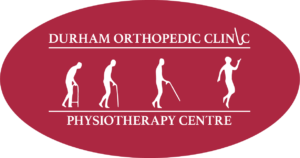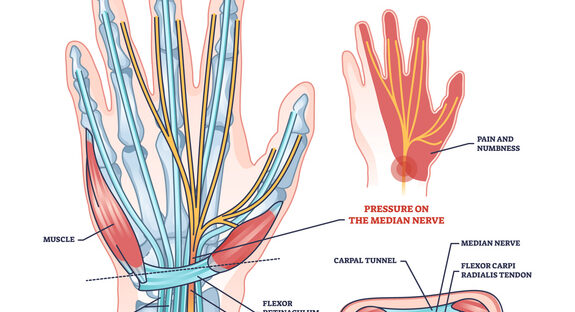If you’re feeling a sharp pain in the front of your hip or struggling with mobility after a workout, you might be dealing with a hip flexor injury. These types of injuries are common among athletes, runners, and even people who sit for long periods. At Durham Orthopedic & Sports Injury Clinic, we see this type of injury more often than you might think and early intervention is key to a full recovery.
So how do you know if your hip flexor is injured? Here are the top 5 signs to watch for.
1. Pain in the Front of the Hip or Groin
A hip flexor injury often presents as sharp, stabbing pain or a deep ache at the front of your hip or in the groin area. The pain might get worse when you lift your knee, walk uphill, or stretch your leg behind you.
Common in: Runners, cyclists, and people who sit for extended periods.
2. Difficulty Walking, Running, or Climbing Stairs
If walking feels awkward, or you notice tightness and pulling when lifting your leg, your hip flexor might be strained or injured. Climbing stairs, running, or even standing from a seated position can aggravate the injury.
Pro tip: Pain with movement is one of the earliest signs that a muscle imbalance or strain may be developing.
3. Weakness or a “Giving Out” Sensation
Injured hip flexors can cause your leg to feel weak or unstable, especially when lifting your knee or balancing on one leg. You may feel like your hip is about to give out under pressure.
Warning sign: This could indicate a moderate to severe strain, and professional evaluation is recommended.
4. Swelling, Bruising, or Tenderness to the Touch
In some cases, you may notice swelling or bruising around the hip, groin, or upper thigh. The area might also feel warm and tender, especially after activity.
At Durham Orthopedic Sports & Injury Clinic, we often use manual therapy and targeted modalities to reduce inflammation and accelerate healing.
5. Discomfort After Sitting or Driving
Do you feel stiff or sore after sitting for long periods or driving? Tight hip flexors can become even more aggravated in a seated position, making it harder to move once you stand.
This is especially common for office workers, truck drivers, and anyone with a sedentary lifestyle.
What to Do Next: Early Care = Faster Recovery
If any of these symptoms sound familiar, it’s time to take action. Ignoring hip flexor pain can lead to longer recovery times and increase your risk of re-injury.
At Durham Orthopedic & Sports Injury Clinic, we offer:
– In-depth orthopedic assessments
– Custom rehab programs tailored to your activity level
– Advanced therapies like manual therapy, dry needling, and mobility training
– Education and support for injury prevention
Contact the professionals at Durham Orthopedic & Sports Injury Clinic to book your appointment today!








